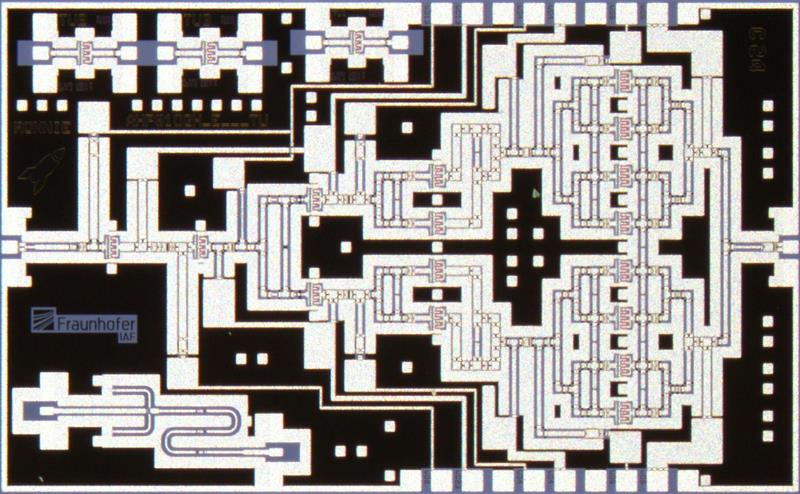With 5G data will be transmitted in real time, and in the future, these high data rates will be covered by frequency bands in the millimetre wave range (>24GHz). They provide a ten times higher band width in comparison to currently available frequency bands (< 3GHz) and have now been released internationally to significantly increase the bandwidth range. Yet, these new frequency ranges cannot be served efficiently with present mobile and antenna technology.
“It is necessary to improve the available output power and energy-efficiency of the net infrastructure for these innovative frequency bands, through the use of advanced gallium nitride technology”, says Dr. Dirk Schwantuschke, who is managing the project on the part of the Fraunhofer IAF, one of the 17 partners involved.
In the project 5G GaN2 components, parts and circuits for the 5G base stations will be developed on the basis of GaN. “The contribution of the Fraunhofer IAF to the overall project will be the development of power amplifiers in E-band, the frequency range around 80 GHz”, explains Dr. Schwantuschke.

Lowering cost and improving performance
Base stations are the junctions of cellular networks. They record the transmitted data of a radio cell and pass them on. To ensure a flood of data via frequency bands in millimetre wave range in the future, the technologies of base stations need to fulfil two criteria: the output power needs to be improved while keeping the cost and the energy consumption low at the same time. To achieve these goals, the project partners of 5G GaN2 count on GaN based technology and amplifier circuits.
Electronic components and systems based on GaN are significantly more energy-efficient than conventional components made of silicon, the researchers explain. The GaN components will optionally be applied on cost-efficient silicon substrates. Another aspect of the project is the combination of various components in a single case, through innovative approaches in regard of packaging technologies, in order to reduce costs.
Aim of the project is the realisation of demonstrators at 28GHz, 38GHz and 80GHz. These demonstrators shall serve as key technologies for the development of a powerful and energy-efficient 5G cellular network based on GaN.
“GaN-based devices are especially well suited for powerful high frequency amplifiers that are required for base stations and the infrastructure of the cellular network, as it allows to provide high frequencies at high power. The amplifiers developed at the Fraunhofer IAF are capable of sending more data faster and energy-efficient through the cellular network,” concludes Dr. Schwantuschke.













